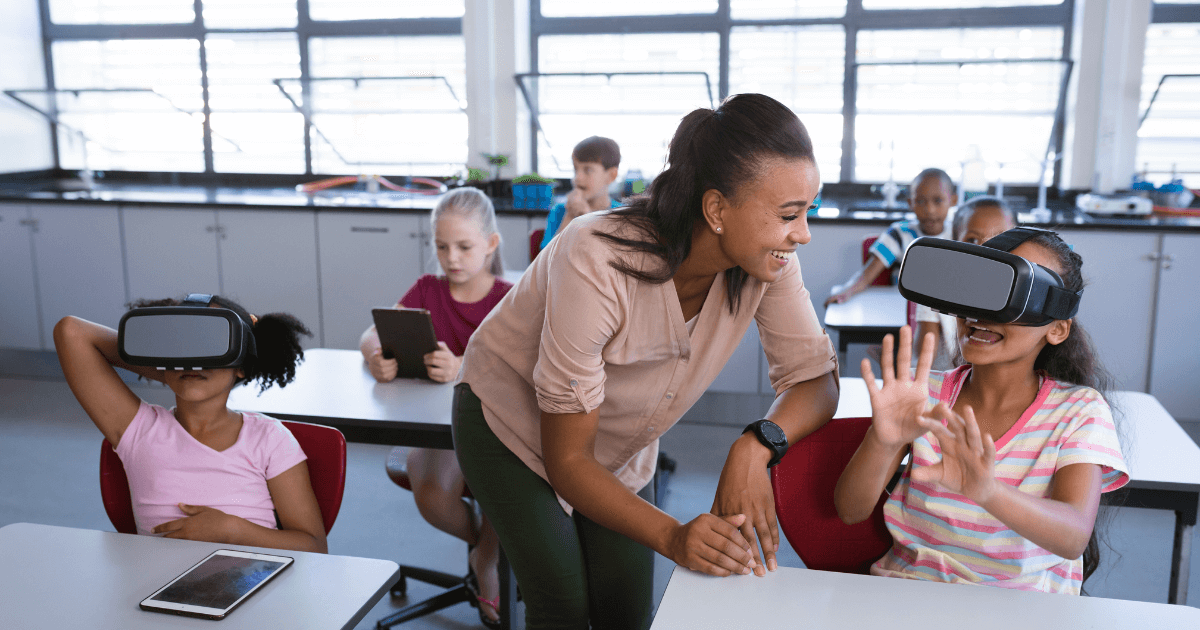VR is coming. You should start preparing for classroom disruption like you've never seen. To be honest, it's been quite a while since any one technology has had as much potential in the classroom as virtual reality is wielding right now. In fact, it has monumental potential in all sorts of avenues, like healthcare, military operations, and entertainment, but we're really interested in its implications on education.
Teachers, you know that if you're not innovating, you're leaving your students out of an exciting and important part of their education. Virtual reality offers a learning experience unlike anything kids have ever seen. Why read about the solar system, the ancient pyramids, or the ocean floor when they can actually see what it's like to travel there? VR makes the impossible possible and catapults children into immersive environments that catalyze engagement and deepen understanding. It's getting much more affordable, too.
Virtual reality offers students an up-close, increasingly in-depth view of the world in which they live. Oftentimes, however, they cannot travel to the most fascinating corners of that world whether it's because of physical limitations, dangerous situations, or financial riduculousness. Luckily, virtual reality can bring those worlds to them. Sure, VR can be used to watch movies and play video games (whic is cool, don't get us wrong), but it holds within a wealth of potential for innovative learning. Take an inner-city child for example. They've probably never been somewhere like the Grand Canyon, or Mt. Rushmore, or even the beach. Now, all they have to do is strap on a headset and they're transported into an immersive environment immediately.
Teachers might also be concerned about the cost of virtual reality experiences as some Google Expeditions set-ups can approach the $10,000 mark. Well, like with all technology, there are other options as well. And, to be frank, some of them are just as good. Whether its the HTC Vive or incredible Oculus Rift, students stand to benefit a great deal from using VR. Not only will they get to add another interactive dimension to their learning, they can also get familiar with how this technology works since there's a very good chance this isn't the last time they will hear from it.
Virtual reality is also completely safe and secure if that's a concern of educators. Though users cannot see the "real" world, there are guides within the headsets that let them know where they physically are. The components are also top-notch, meaning they won't break or get easily damaged, and the graphics are completely dazzling. Plus, students can use viewer covers so that they're not spreading germs (or sweat) to their classmates after they've taken the viewer off. Now they've really thought of everything!
In education, there are a few specific models that we highly recommend for use in schools, libraries, and even makerspaces. Each is incredibly immersive, affordable, and even comes with some support from us! Those models are the aforementioned Oculus Rift and HTC Vive as well as the new View-Master, the Samsung Gear VR, Microsoft HoloLens, and the VR One.
To learn more about our virtual reality offerings, find the system or viewer and price that's right for you, learn why virtual reality is poised to shake up education, and how you can make it happen, keep following our blog!
UPDATE: We've recently selected a potential hardware alternative for Google Expeditions kits. The RobotLAB VR Expeditions 2.0 kits are now available on our store. They include VR bundles with materials for 10, 20, or 30 students as well as a similar platform that educators used with Google Expeditions. Educators can bring students on over 700 immersive Expeditions, virtual field trips, and more using the Expeditions 2.0 mobile app. Click to explore our current list of RobotLAB VR Expeditions 2.0 offerings.



